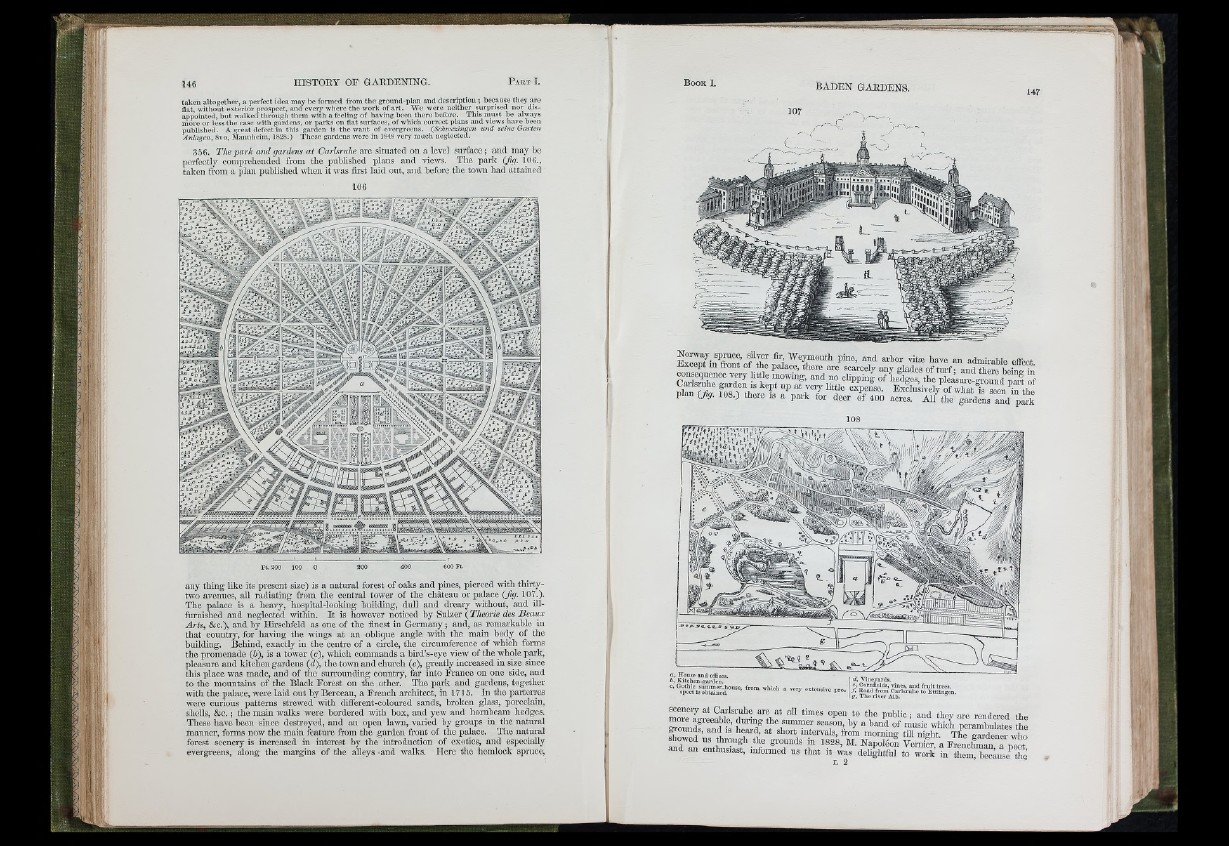
any thing like its present size) is a natural forest of oalcs and pines, pierced with thirty-
two avenues, all radiating from the central tower of the chateau or palace (Jig. 107.).
The palace is a heavy, hospital-looking building, dull and dreary without, and ill-
furnished and neglected within. I t is however noticed by Sulzer (Theorie des Beaux
Arts, &c.), and by Hirschfeld as one of the finest in Germany; and, as remarkable in
that country, for having the wings at an oblique angle with the main body of the
building. Behind, exactly iu the centre of a circle, the cfrcmnference of which fonns
the promenade (b), is a tower (c), which commands a bird’s-eye view of the whole pai'k,
pleasure and kitchen gardens (d), the toivn and church (e), greatly increased in size since
this place was made, and of the surrounding country, far into Tfance on one side, and
to the mountains of the Black Forest on the other. The park and gardens, together
with the palace, were laid out by Berceau, a Fi'ench architect, in 1715. In the partcn-cs
were curious patterns strewed with different-coloui'ed sands, broken glass, porcelain,
shells, & c .; the main walks were bordered with box, and yew and hombeam hedges.
These have been since destroyed, and an open lawn, varied by groups in tlie natural
manner, forms now the main feature from tho garden front of the palace. The natural
forest scenery is increased in interest by the introduction of exotics, and especially
evergreens, along the margins of the alleys and -walks. Here the hemlock spmce.
a, Iloiiae and officea.
0, Kitchen-gardon.
c, Gothic summer-house, from which .
spect IS obtained.
d, Vineyarda.
very extensiTo pro. /, Road from Carlsruhe to Ettlincen,
¡7, The river Aib.
S o L t a L d • ’ t f tt a summer season, by a band of music whicb perambulates the
A i h ^ d , at short intervals, from moming till night. The gardener who
and an enthusiast, informed us that it was dehghtful to work in them, becLse thé